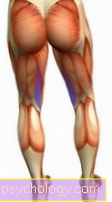The probiotics
introduction
Probiotics are drugs or foods that contain viable microorganisms. They should have a positive effect on the consumer's various organ systems. Bacteria, for example lactobacilli or bifidobacteria, but also yeasts are often probiotically effective.
Probiotics are recommended as natural protection, especially during or after taking antibiotics, which can damage the natural intestinal flora of humans. In addition, a number of other areas of application for probiotics are described. Whether and how helpful these really are is explained below.

Reasons for taking probiotics
Taking probiotics can be particularly useful in the context of gastrointestinal diseases. Studies have now shown that people who suffer from inflammatory bowel diseases such as Crohn's disease or ulcerative colitis can benefit from taking it. Irritable bowel syndrome can also be positively influenced by this.
In addition, scientific studies showed a shorter duration and a milder course of viral or bacterial diarrhea in children who also took probiotics. Probiotics are often touted after taking antibiotics. They should contribute to the regeneration of the damaged intestinal mucosa and reduce or prevent subsequent diarrhea. But more on that later.
In addition to the field of gastrointestinal diseases, the microorganisms should also be able to help people who suffer from allergies. Children who suffer from atopic dermatitis, i.e. neurodermatitis, should be able to be helped in this way. Another area of application is vaginal thrush and bacterial colonization of the vagina (bacterial vaginosis). The vagina is usually colonized with lactic acid bacteria, which leads to a natural and slightly acidic environment in the vagina. In the case of vaginal fungus, this milieu is changed and it sometimes takes a long time for healthy vaginal flora to settle again. Probiotics with lactic acid bacteria can then help.
However, completely healthy people should rather refrain from taking it. Various studies have now shown that a healthy intestinal flora can also be unnecessarily unbalanced by probiotics.
Find out all about the topic here: inflammatory bowel disease.
How do probiotics work?
The exact mechanism of action of probiotics is not yet fully understood. That is probably one of the reasons for the rather inconsistent recommendations for taking the preparations.
Various studies suggest that the probiotic and viable microorganisms attach to the lining of the large intestine and form colonies there. These colonies can now interact with immune cells in the body. Via receptors, they mediate the release of substances that have a harmful effect on malignant bacteria in the intestine. The formation of the colonies has other advantages. It provides an effective barrier that protects the intestine from being colonized by malignant bacteria.
The interaction of the probiotics with the immune system is also said to explain the positive effect these have on allergies. In the case of allergies, the immune system is directed against actually harmless substances, such as pollen. The latest studies also suggest that probiotic microorganisms even prevent too many inflammatory substances from being released in the body.
Which probiotics are the best?
The probiotic microorganisms that are repeatedly used in the studies mentioned above are primarily the following: various lactobacillus strains (L. rhamnosus, L. casei, L. plantarum, L. azidophilus, L. delbrueckii), some strains of bifidobacteria (B. infantis , B. longum, B. breve) and the yeast Saccharomyces boulardii.
Its effectiveness has been clinically proven in certain cases, especially in the context of various gastrointestinal diseases. When buying probiotic products, consumers should therefore pay attention to the type of bacterial or fungal cultures contained in the product.
The probiotic yogurt
Most supermarkets these days offer a whole range of probiotic yogurts to be spooned or in small bottles to drink. These yoghurts usually contain actively added bacterial strains with proven probiotic effectiveness. These mainly include lactobacilli and bifidobacteria.
Whether these foods actually have a positive influence on physical well-being is controversial, but at least care should be taken to ensure that it is a product that contains at least one million microorganisms per gram. Buyers should also find out whether the organisms contained are also those identified (see above).
A common pitfall when buying probiotic yogurts is the comparatively high sugar content of some products. Here consumers should take a look at the ingredients of the yoghurts. Artificial sweeteners are also often included. If you can do without it, you should choose yogurts to which no additives have been added
The probiotic capsules
Most probiotics come in capsule form. There are various points to consider. As with yoghurts, consumers should first take a look at the ingredients of the capsules. Here, too, it is important to pay attention to the type and number of germs it contains.
Probiotic capsules can be made in different ways. Some contain gelatin, others don't. This can be especially important for vegans and vegetarians. The capsules are usually offered without a prescription and are available in pharmacies and drug stores. Consumers should pay attention to the price and dosage when purchasing the capsules. Longer use can quickly become very expensive. Those affected should consult their doctor if they are unsure whether it makes sense to take them.
Which foods have a probiotic effect?
While microorganisms are actively added to probiotic yoghurt, normal yoghurt already contains a certain number of lactobacilli. It can therefore also be viewed as a probiotic food. In addition, other sour milk products also have a probiotic effect, for example kefir or curd milk. In addition to lactobacilli, kefir also contains other probiotic microorganisms, namely yeasts.
Another probiotic food is the sauerkraut. In its raw form, it also contains viable microorganisms. Sauerkraut is also a form of probiotic diet for vegans. Furthermore, some types of cheese, for example Parmesan or Gouda, contain live lactic acid bacteria. The following applies: the older the cheese, the more bacteria it contains.
Kombucha tea is a largely unknown food here. This is tea to which the Kombucha mushroom has been added, which triggers a fermentation process. The tea only contains living microorganisms when it is fresh. Kimchi is also little known. It is fermented Chinese cabbage, which contains lactobacilli. It is also said to have a very healthy effect.
Probiotics after taking antibiotics
Probiotics are probably the most widespread area of application for them to be taken together with or after antibiotics. This should protect or replace the intestinal flora and prevent diarrhea as a side effect of antibiotics.
It has now been scientifically proven that one should not wait until diarrhea has occurred before taking probiotics. Then these remedies no longer seem to have any effect. Probiotics, on the other hand, have a positive effect if they are taken at the same time as taking antibiotics. Studies have shown that patients who were also given probiotics while taking antibiotics were less likely to have diarrhea afterwards.
In the special case of stomach inflammation caused by the dreaded Helicobacter pylori germ, which is treated with a combination of several antibiotics, a study showed that patients who were given probiotics had fewer side effects.
The side effects of antibiotics? Read more here.
The critical evaluation of
Unfortunately, probiotics are still not fully understood. That is a big reason why they are very controversial. While some studies show the positive benefits, especially with regard to gastrointestinal disorders, there are also studies that cannot see any benefit. There seems to be very large differences from patient to patient. For example, probiotics can contribute to the regeneration of the intestinal flora in some people and in some cases can be detected in the intestine for a long time, while in others they are no longer detectable after a very short time and apparently also show no effectiveness.
The treatment areas for probiotics are also not clearly defined. In the meantime, large reviews have shown that diarrheal diseases are probably a main area of application for probiotics. Whether other organ systems, such as the skin or the brain, can also be positively influenced is partly suspected, but has by no means been proven.
Another important point is the underestimation of the side effects of probiotics. Because probiotics can even be harmful under certain circumstances.
The side effects of probiotics
Many people underestimate the fact that probiotics may not only be useful but also harm. In a scientific study, for example, a worrying phenomenon was demonstrated. Patients who took probiotics in large quantities developed severe gastrointestinal discomfort after a while. Some even suffered impaired consciousness and their bodies became hyperacid. The reason was masses of lactic acid bacteria. These had not only settled in the large intestine, where their actual site of action is, but also in the small intestine and stomach. The excessively produced lactic acid disrupted the intestinal environment and caused hyperacidity with impaired consciousness.
This incorrect colonization of lactic acid bacteria occurs not only with excessive consumption of probiotics, but also with so-called short bowel syndrome (those affected lack parts of the small intestine), with low intestinal activity and constipation, as well as with the additional use of some medications. In addition, there were significant side effects in patients with a reduced immune system and in patients with severe inflammation, for example pancreatitis (inflammation of the pancreas). Even the mortality of these groups of people increased when they took probiotics.
The cost of probiotics
Probiotics in capsule form, in particular, can be quite expensive. The price per capsule is between 25 and 90 cents. Depending on the manufacturer, one or two of these capsules should be taken per day. If it is assumed that a probiotic is taken for a month, the costs are between about eight and 55 euros.
The probiotic yogurts offered are also priced between 20 and 80 cents per 100 grams. If one yoghurt is to be eaten per day, the prices are comparable to those for the capsules.





























